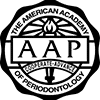Dentinal hypersensitivity is one of the most common patient complaints in a dental office. Dentinal hypersensitivity is defined as “short, sharp pain arising from exposed dentin in response to stimuli, which are usually thermal, evaporative, tactile, and osmotic or chemical” (according to Holland, et al.). Usually, the pain is localized and of short duration, which differs from pulpal pain, which is typically dull, aching, and longer lasting.
It can affect 57% of patients, with prevalence being higher in women, with canines and bicuspids of both arches most commonly involved.
The hydrodynamic theory is often agreed upon as the cause and mechanism of dentinal hypersensitivity. The open dentinal tubules of the exposed dentin results a dentinal fluid shift in response to stimuli such as air blasts, hot, cold. touch, and chemical stimuli. The dentinal fluid movement activates the odontoblasts and its nerve complex as sensor cells in the pulp, thus generating the pain. Therefore if the tubules are blocked, dentinal tubule fluid flow would decrease, thus reducing or eliminating sensitivity.
The following conditions can lead to exposed dentinal tubules that result in hypersensitivity:
1. Periodontal disease (loss of attachment on bone loss) and treatment (causing recession)
2. Gingival recession (exposure of dentin)
3. Caries (in dentin)
4. Erosion (chemical/acidic dissolution)
5. Abrasion (mechanical force from foreign source)
6. Attrition (occlusal /parafunctional)
7. Abfraction (occlusal stress)
8. Cracked and fractured teeth
9. Scaling and root planning (cementum removed)
10. Restorative procedure
11. Extreme toothbrushing
12. Teeth whitening

 Dr. Sakamoto
Dr. Sakamoto
 Dr. Mannava
Dr. Mannava
 Our Team
Our Team
 FIRST VISIT
FIRST VISIT
 PATIENT FORMS
PATIENT FORMS
 DENTAL INSURANCE
DENTAL INSURANCE
 POST-OP INSTRUCTIONS
POST-OP INSTRUCTIONS





